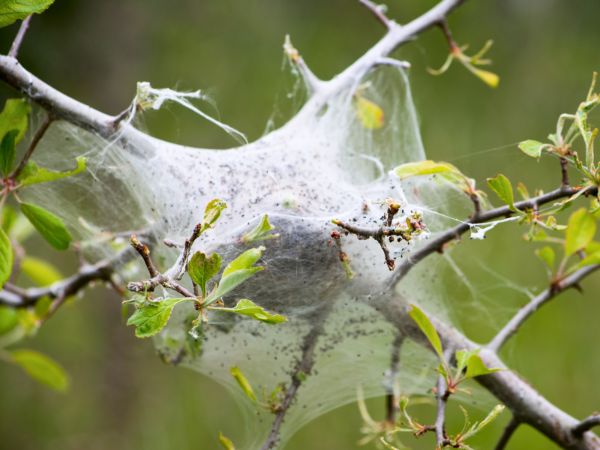
Common Garden Pests
How to spot the signs—and stop the damage!
Trees, shrubs and perennials can fall prey to a wide range of pests, from tiny insects to larger animals. Early detection and regular maintenance are key to protecting your landscape. Healthy plants—those that are well-watered, properly fertilized, and free from drought stress—are more resilient and better able to fight off pest and disease attacks.
Animal Pests
Animal damage may be less frequent than insect problems, but it can still be devastating—especially in winter.
- Deer: Known for browsing on cedars, evergreens, and tender deciduous branches.
- Dogs: May dig up shrubs or burn foliage with urine.
- Rabbits & Mice: Gnaw bark during the winter, potentially girdling and killing young trees.
Control Tips:
- Use fencing, repellents, or tree guards (especially in winter).
- Apply trunk wraps made of Kraft paper or plastic to protect bark from gnawing.

Insect Pests
Early action is key—many sprays or treatments only work during specific pest life stages.
Aphids
- Tiny green, black, or yellow insects that cluster on tender shoots.
- Cause distorted growth and leave behind sticky honeydew.
Timing:
Spray insecticidal soap when colonies are first noticed—early morning or late evening is best. Repeat every 7–10 days as needed.
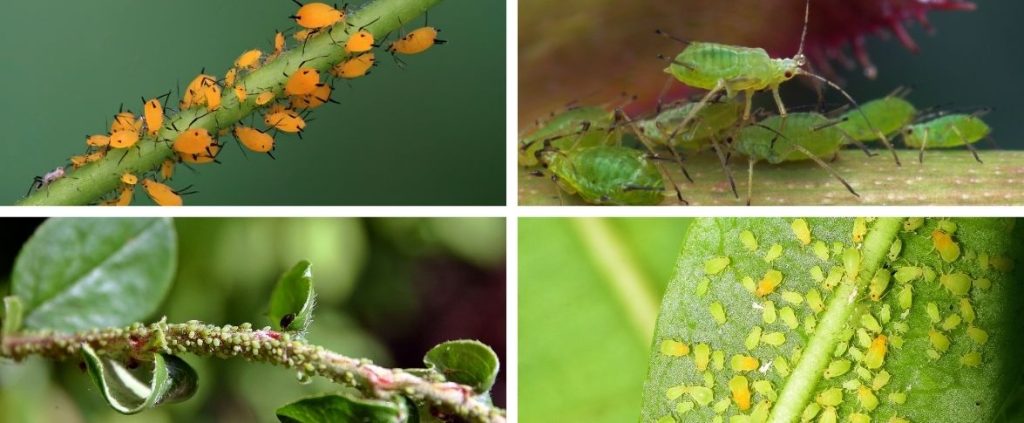
Bark Beetles
- Tiny beetles that tunnel under bark, disrupting water flow and weakening trees.
- Often target stressed or injured trees.
Timing:
Preventive care is best. Avoid unnecessary pruning in summer, and monitor storm- or drought-damaged trees closely.
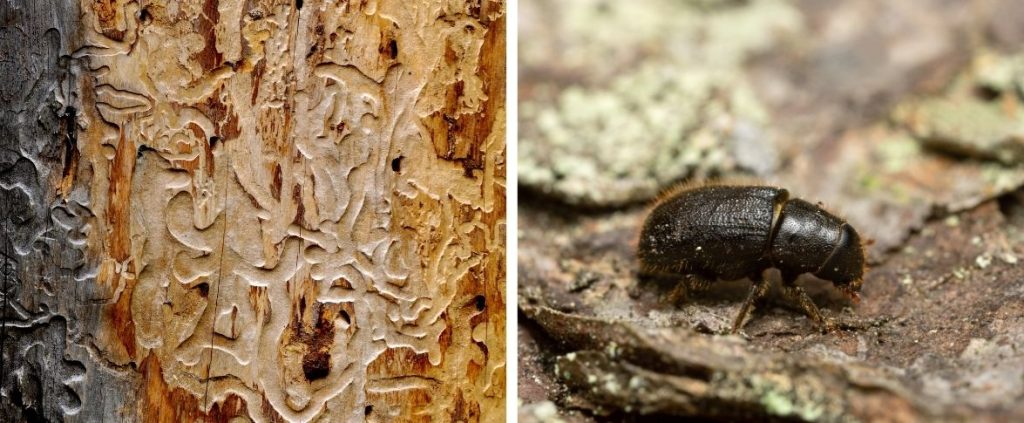
Caterpillars
- Larvae of moths and butterflies, chewing through leaves.
- Some resemble leafrollers, loopers, or armyworms.
Timing:
Apply BTK spray in early stages when caterpillars are small and actively feeding. Manual removal is also effective.
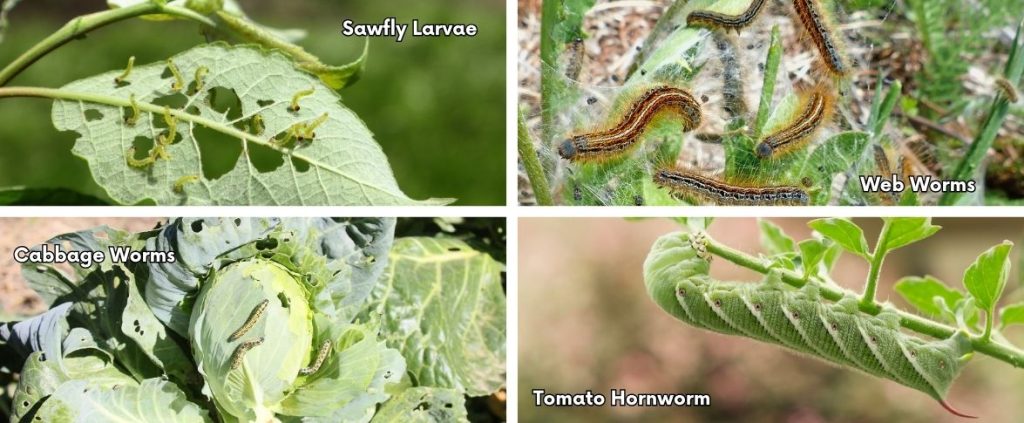
Katydid
- Green, leaf-shaped insects that blend into foliage; related to crickets and grasshoppers.
- Chew irregular holes in leaves and flower petals—damage is usually cosmetic.
Timing:
Not typically a serious pest. Prune affected areas if needed. Encourage birds and natural predators.
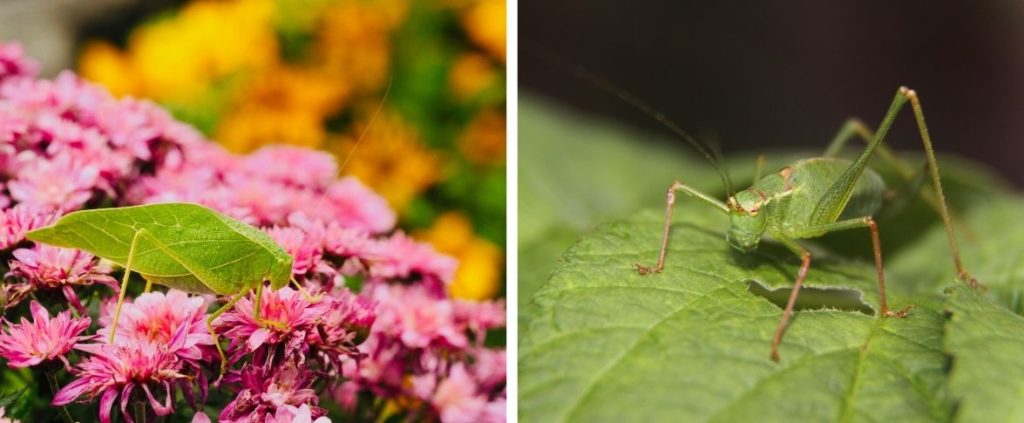
Leafhopper
- Small, wedge-shaped jumping insects; often green or colourful.
- It causes stippling on leaves, leaf curl, and can transmit plant diseases.
Timing:
Control weeds and remove debris to reduce habitat. Spray with insecticidal soap as needed.

Leafminers
- Larvae that feed between leaf layers, creating squiggly or blotchy trails.
- Can be flies, moths, sawflies, or beetles.
Timing:
Remove infested leaves before larvae mature. Systemic insecticides are most effective early in the season, applied just after leaf-out.
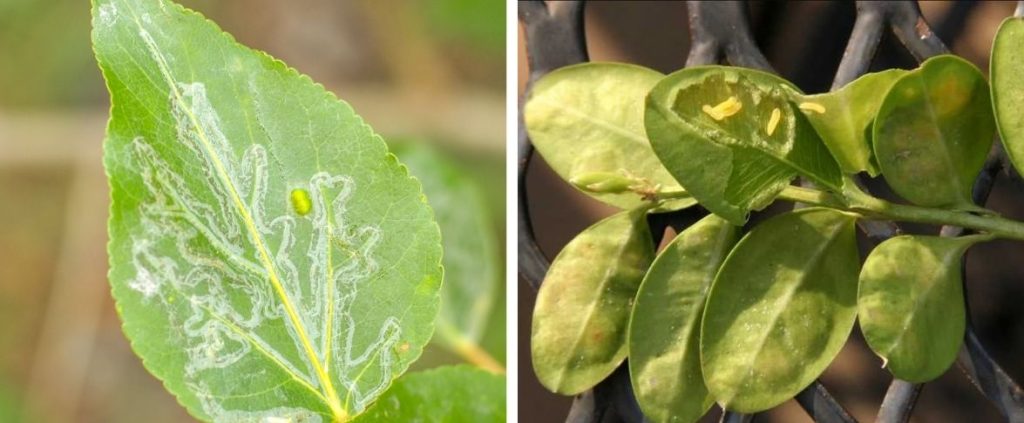
Mealybugs
- White, fuzzy insects that cluster on stems and leaf joints.
- Produce sticky residue and cause stunted growth.
Timing:
Treat with rubbing alcohol or insecticidal soap as soon as they appear—repeat weekly.
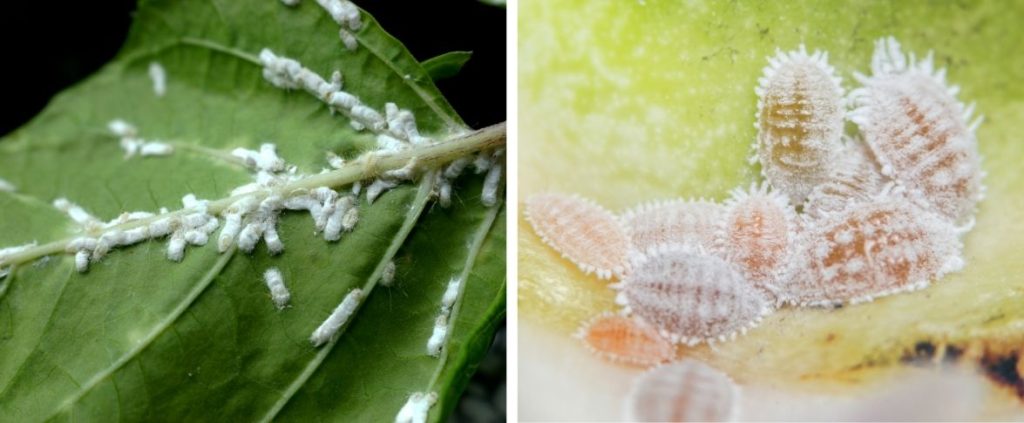
Scale Insects
- Appear as hard bumps on stems or leaves; some mimic mealybugs.
- Cause yellowing and leaf drop.
Timing:
- Insecticidal soap is effective only during the crawler stage (typically early summer).
- Horticultural oil applied during dormant season can help reduce overwintering populations.
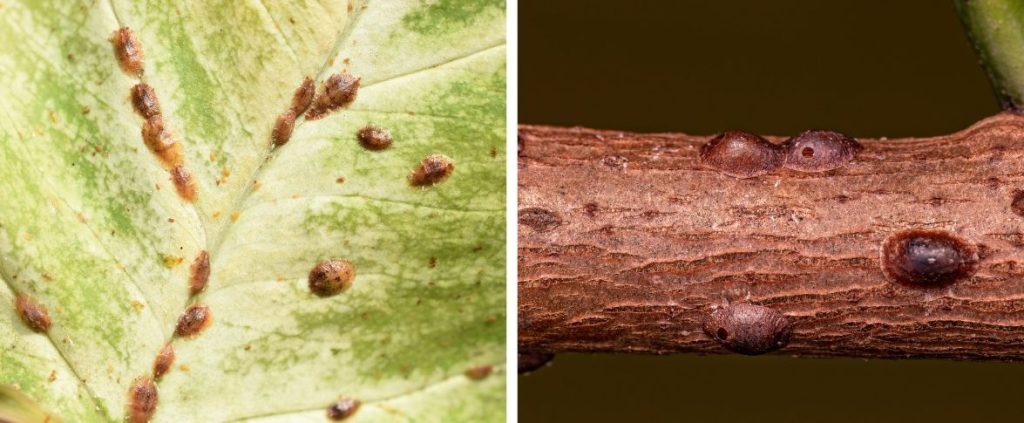
Skeletonizers
- Beetle larvae that leave “lacey” damage, eating leaf tissue between veins.
- Adults are yellow beetles with black spots.
Timing:
Light damage rarely needs treatment. For heavier infestations, use insecticidal soap when larvae are first visible—usually in mid-to-late summer.
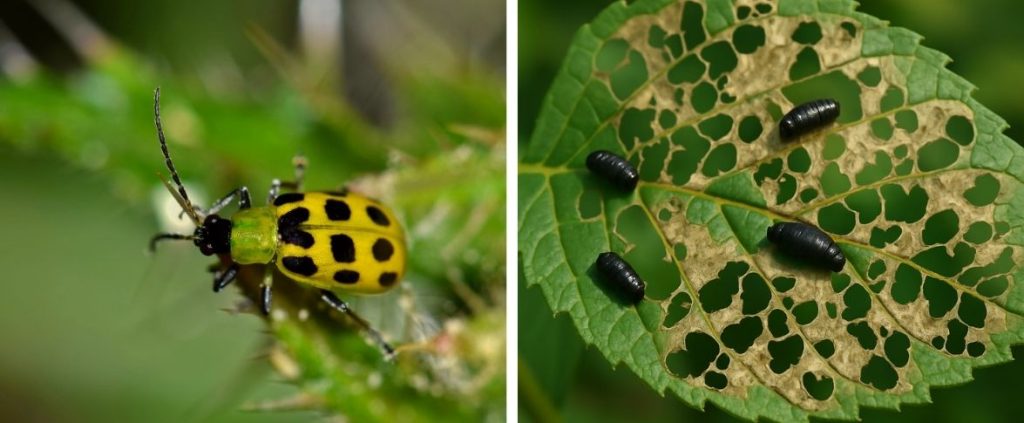
Slugs & Snails
- Leave ragged holes and slime trails.
- Thrive in cool, moist conditions.
Timing:
Apply slug bait in the evening, or use traps. Remove debris and groundcover to reduce habitat.
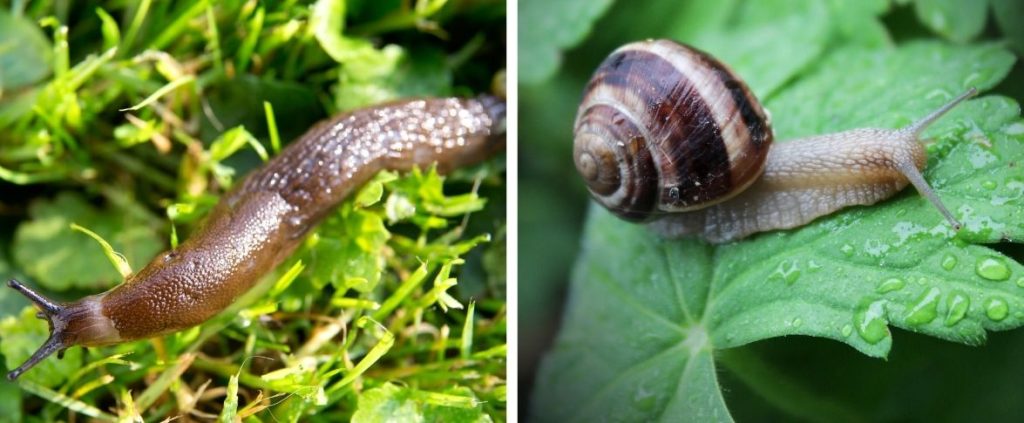
Spongy Moth (formerly Gypsy Moth)
- Hairy caterpillars with red and blue spots.
- Defoliate trees—especially oak, but will feed on others if desperate.
Timing:
Apply BTK (Bacillus thuringiensis kurstaki) spray in early spring, just as caterpillars begin to hatch and before they exceed 2.5 cm (1 inch) in length.
Destroy egg masses in winter.

Other Regional Pests to Watch For
- Japanese Beetles: Common in Southwestern Ontario. These beetles skeletonize leaves on roses, linden, birch, and many shrubs.
Read our Japanese Beetle guide - Emerald Ash Borer: Devastates ash trees. Watch for canopy dieback and D-shaped exit holes.
Contact your municipality for action steps. - Sawflies: Often mistaken for caterpillars but lack prolegs. Feed in groups, especially on evergreens and roses.

Encourage These Beneficial Insects
Not all bugs are bad! These garden helpers naturally reduce pest populations and help restore balance to your landscape:
| Beneficial Insect | What They Eat | How to Attract Them |
|---|---|---|
| Ladybugs | Aphids, mealybugs, scale, mites | Plant dill, fennel, yarrow, or marigolds |
| Lacewings | Aphids, caterpillars, leafhoppers | Add cosmos, sweet alyssum, and coreopsis |
| Hoverflies | Aphids, thrips, scales | Include herbs like parsley, lavender, and mint |
| Parasitic Wasps | Caterpillars, beetle larvae, whiteflies | Grow Queen Anne’s lace, dill, and asters |
| Ground Beetles | Slugs, cutworms, caterpillars | Leave leaf litter or stone piles for shelter |
| Predatory Mites | Spider mites and thrips | Keep moisture consistent and avoid over-spraying pesticides |
Tip: Avoid broad-spectrum insecticides that harm both pests and beneficial insects. Spot-treat only when necessary, and always follow label directions.
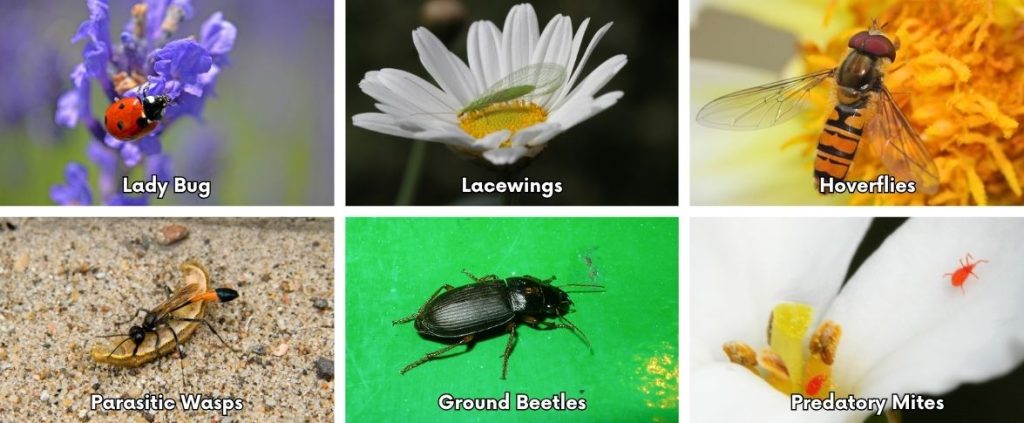
Final Notes: Prevention Is Power
- Monitor your trees and shrubs regularly—early action is far more effective than treatment after damage has spread.
- Water wisely and avoid drought stress.
- Fertilize based on plant needs, avoiding overfeeding.
- Mulch to retain moisture and reduce weeds, but keep mulch away from trunks and stems.
If you’re unsure what’s bugging your plants, stop by Canadale with a photo or sample—we’re happy to help you identify the issue and find a safe solution.
